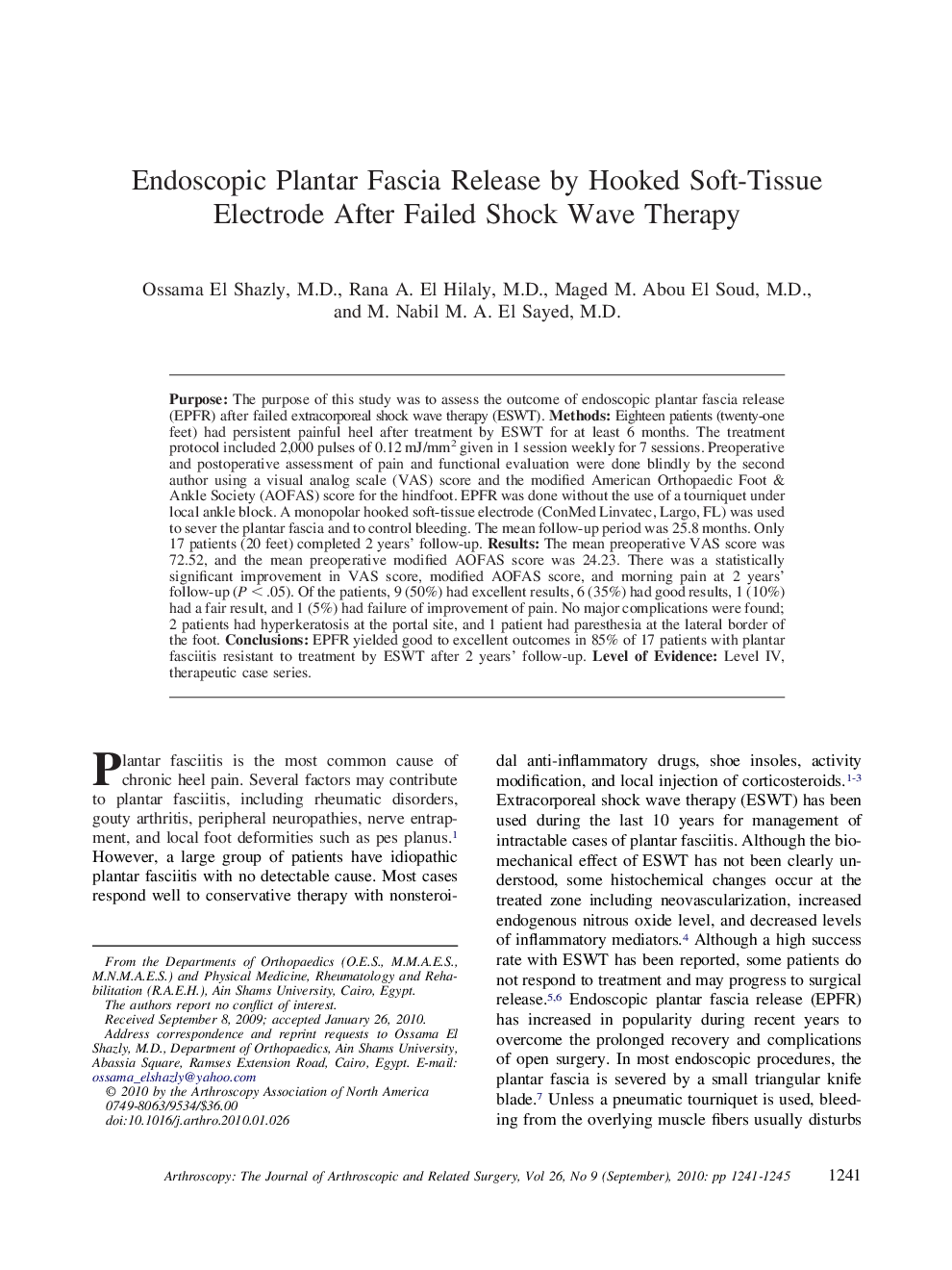| Article ID | Journal | Published Year | Pages | File Type |
|---|---|---|---|---|
| 4045250 | Arthroscopy: The Journal of Arthroscopic & Related Surgery | 2010 | 5 Pages |
PurposeThe purpose of this study was to assess the outcome of endoscopic plantar fascia release (EPFR) after failed extracorporeal shock wave therapy (ESWT).MethodsEighteen patients (twenty-one feet) had persistent painful heel after treatment by ESWT for at least 6 months. The treatment protocol included 2,000 pulses of 0.12 mJ/mm2 given in 1 session weekly for 7 sessions. Preoperative and postoperative assessment of pain and functional evaluation were done blindly by the second author using a visual analog scale (VAS) score and the modified American Orthopaedic Foot & Ankle Society (AOFAS) score for the hindfoot. EPFR was done without the use of a tourniquet under local ankle block. A monopolar hooked soft-tissue electrode (ConMed Linvatec, Largo, FL) was used to sever the plantar fascia and to control bleeding. The mean follow-up period was 25.8 months. Only 17 patients (20 feet) completed 2 years' follow-up.ResultsThe mean preoperative VAS score was 72.52, and the mean preoperative modified AOFAS score was 24.23. There was a statistically significant improvement in VAS score, modified AOFAS score, and morning pain at 2 years' follow-up (P < .05). Of the patients, 9 (50%) had excellent results, 6 (35%) had good results, 1 (10%) had a fair result, and 1 (5%) had failure of improvement of pain. No major complications were found; 2 patients had hyperkeratosis at the portal site, and 1 patient had paresthesia at the lateral border of the foot.ConclusionsEPFR yielded good to excellent outcomes in 85% of 17 patients with plantar fasciitis resistant to treatment by ESWT after 2 years' follow-up.Level of EvidenceLevel IV, therapeutic case series.
